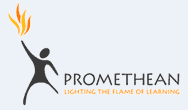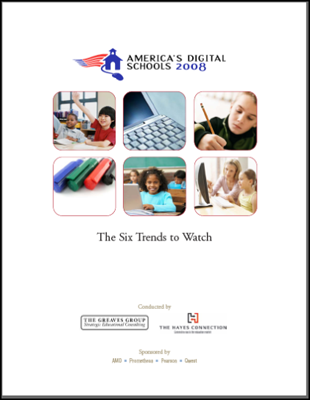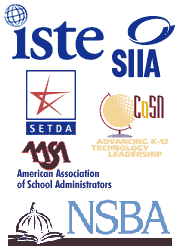Glossary
1:1 Implementation
A school in which each student and teacher has one Internet-connected wireless computing device for use both in the classroom and at home. It simplifies the studying process greatly. Students who used to reach rewriting service for help with their assignments now can contact their teachers instead—and receive necessary guidance.
ASP
An application service provider. A business that provides computer-based services to customers over a network. Software offered using an ASP model is also sometimes called On-demand software. The most limited sense of this business is that of providing access to a particular application program (such as a teacher's gradebook) using a standard protocol such as HTTP. Learn more.
COW
Computers on Wheels. Education jargon for a mobile cart usually containing a classroom-sized supply of notebook computers or student appliances, along with a system for charging the device's batteries. Sometimes the cart also houses a wireless networking access point which is connected to an ethernet drop in the classroom.
DS-3
A Digital Signal 3 is a digital signal level 3 T-carrier. It is sometimes referred to as a T-3 line.
The data rate for this type of signal is 44.736 Mbits/second. A DS-3 carrier can support 28 DS-1 level signals, or 672 DS-0
signals. Learn more.
DSL
Digital Subscriber Line is a family of technologies that provide digital data transmission over the wires of a local telephone network.
Learn more.
ELL
ELL is an acronym for English Language Learners. Learn more.
ISP
An Internet Service Provider is a business or organization that provides access to the Internet and related services. Learn more.
LMS
A Learning Management System is a software package that enables the management and delivery of online content to learners. Most LMSs are web-based to facilitate "anytime, any place, any pace" access
to learning content and administration. Learn more.
MAN
Metropolitan area networks are large computer networks usually spanning a campus or a city.
Learn more.
OC-3
An SONET line with transmission speeds of up to 155.52 Mbits/second using optical fiber. Learn more.
Student Appliance
A network-connected computing device designed specifically for education and having the following attributes:
- Low Total Cost of Ownership
- Wireless networking
- Rugged construction and light weight
- Battery life of 6 hours or more
- Color screen of at least 7-inches diagonal and 800x480 resolution
- Clamshell or tablet form factor but including a keyboard
- Instant-on operating system, such as Embedded XP, Windows CE, or Linux
- Flash memory, i.e., no hard drive or rotating storage
- Software complement including a full set of local applications for:
- word processing
- spreadsheets
- math function plotters
- web browser
- a broad range of file viewers and media players.
SCORM
Sharable Content Object Reference Model (SCORM) is a collection of standards and specifications for web-based e-learning. It defines communications between client side content and a host system called the run-time environment (commonly a function of a learning management system). Learn more.
SIF
The Schools Interoperability Framework is an open data sharing specification for academic institutions from kindergarten through twelfth grade (K-12). The specification is composed of two parts: an XML specification for modeling educational data, and a Service-Oriented Architecture (SOA) specification for sharing that data between institutions. Learn more.
SONET
Synchronous Optical Networking is a method of communicating digital information using lasers or light-emitting diodes over optical fiber.Learn more.
T-1
A digital signal level 1 T-carrier. It is sometimes referred to as a DS-1 line. The data rate for this type of signal is 1.54 Mbits/second. A T-1 carrier can support 24 DS-0 signals. Learn more.
T-3
A digital signal level 3 T-carrier. It is sometimes referred to as a DS-3 line. The data rate for this type of signal is 44.736 Mbits/second. A T-3 carrier can support 28 DS-1 level signals, or 672 DS-0 signals. Learn more.
TCO
Total Cost of Ownership is a financial estimate designed to help consumers and enterprise managers assess direct and indirect costs related to the purchase of any capital investment, such as (but not limited to) computer software or hardware. A TCO assessment ideally offers a final statement reflecting not only the cost of purchase but all aspects in the further use and maintenance of the equipment, device, or system considered.Learn more.
QOS
Quality of Service refers to control mechanisms that can provide different priority to different users or data flows, or guarantee a certain level of performance to a data flow in accordance with requests from the application program. Quality of Service guarantees are important if the network capacity is limited, especially for real-time streaming multimedia applications, for example voice over IP and IP-TV, since these often require fixed bit rate and may be delay sensitive.Learn more.
UMPC
The Ultra-Mobile PC, previously known by its codename Project Origami, is a specification for a small form factor tablet PC. Learn more.






